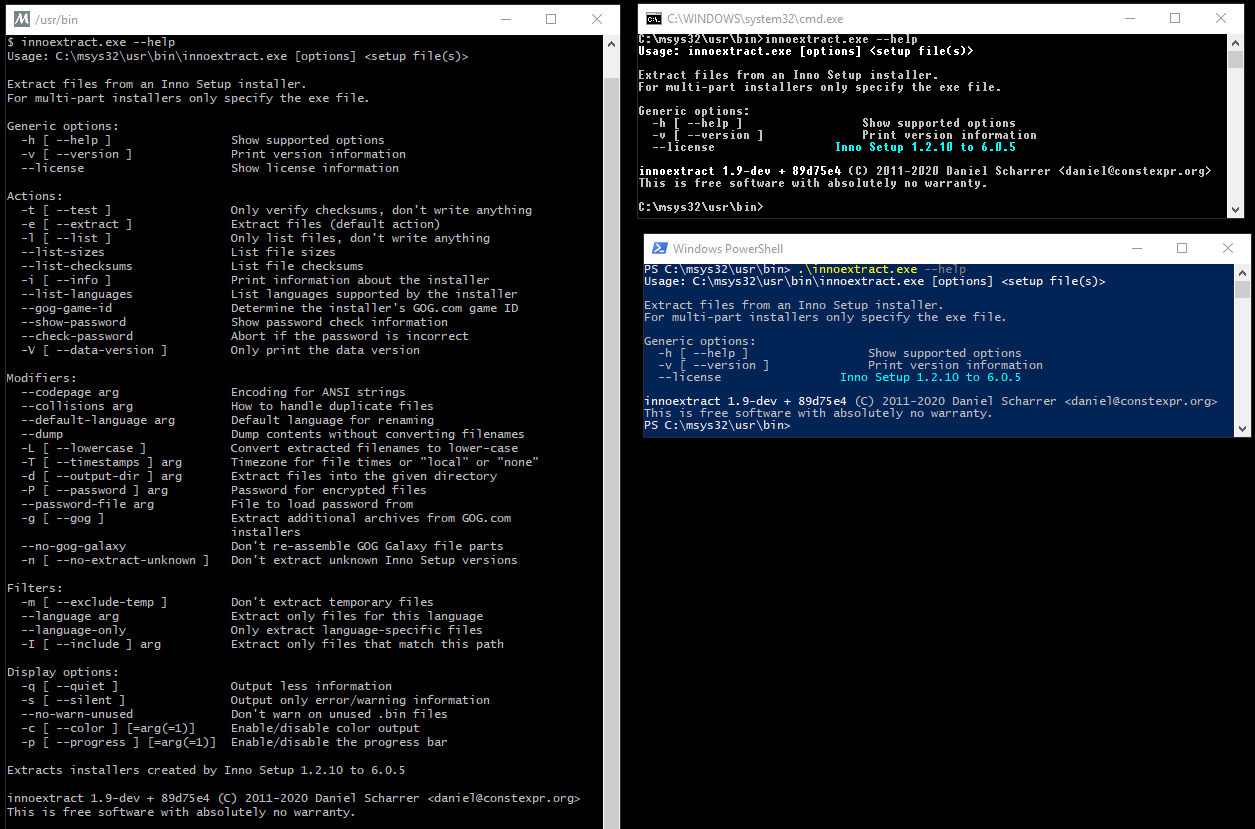
If the files extract, cancel the installer window that will appear and locate the installer folder - C:\Autodesk\. IconsExtract - Extract icon/cursor stored in EXE, DLL, OCX, CPL files.Copy the downloaded files to a different machine and run the extraction on that machine. Process Monitor will watch as the executable extracts the MSI/MST/MSP file and tell you where it was extracted. You can also view and extract the contents of the Zip, Rar, 7-zipThen launch the installer and leave it running. This can be useful if you are installing the program itself is not possible or unwanted.Supported types of installers: Inno setup, NSIS, Wise Installer, Install Shield. Setup Extractor allows you to view and extract the contents of the installers as in conventional archives.

Extract Setup Exe Dll In A
Added Drag & Drop support - dragging a file from Explorer window put it in the source filename field.Dragging a folder from Explorer window put it as the destination folder. Added 'Multiple Files Mode', which allows you to extract the resources of every dll in a separated subfolder. Fixed tab order issue in the main window. Fixed bug: ResourcesExtract didn't extract some of the binary resourcesWhen 'Other Binary Resources' option is turned on. Instead you’ve al.ResourcesExtract is a small utility that scans dll/ocx/exe files and extract all resources(bitmaps, icons, cursors, AVI movies, HTML files, and more.) stored in them into the folder that you specify.You can use ResourcesExtract in user interface mode, or alternatively, you can run ResourcesExtract in command-line mode without displaying any user interface.This utility works on any version of Windows, from Windows 98 to Windows 8.For using this utility under Windows 98/ME, you must download the non-Unicode version. However, the way I’m reading your question that’s not what you’re asking.
(For example: mydll_2001_BINARY.bin) The filename of binary resource is now also contains the resource type name. Added new command-line option: /RunConfig - Extract resources according to the specified config file, without user interface. Added new command-line option: /LoadConfig - Start ResourcesExtract with the specified config file. Added new options: 'Save Config' and 'Load Config'
Run ResourcesExtract with /savelangfile parameter:A file named ResourcesExtract_lng.ini will be created in the folder of ResourcesExtract utility. 0 = Unlimited.Specify 1 if you want to overwrite existing filenames, or 2 to save to another name when filename already exists.Specify 1 if you want to open the destination folder automatically.ResourcesExtract.exe /Source "f:\windows\system32\shell32.dll" /DestFolder "f:\temp\resources" /ExtractIcons 1 /ExtractCursors 1ResourcesExtract.exe /Source "c:\windows\system32\*.dll" /DestFolder "c:\temp\resources" /ExtractIcons 1 /ExtractCursors 0 /ScanSubFolders 1ResourcesExtract.exe /Source "f:\windows\system32\shell32.dll" /DestFolder "f:\temp\resources" /FileExistMode 2Translating ResourcesExtract to other languagesIn order to translate ResourcesExtract to other language, follow the instructions below: Specify 1 to extract the cursors or 0 to skip the cursor resources.Specifies whether you want to extract bitmap resources.Specifies whether you want to extract HTML resources.Specifies whether you want to extract manifest resources.Specifies whether you want to extract animated icons.Specifies whether you want to extract animated cursors.Specifies whether you want to extract avi resources.Specifies whether you want to extract type libraries.Specifies whether you want to extract binary resources.Specifies whether you want to scan subfolders.Specifies the subfolders depth value. Specify 1 to extract the icons or 0 to skip the icon resources.Specifies whether you want to extract cursor resources. Any parameter that you don't specify in the command-line is automatically loaded from the configuration file of ResourcesExtract (ResourcesExtract.cfg).Start ResourcesExtract with the specified config file.Extract resources according to the specified config file, without user interfaceSpecifies the filename or wildcard that you want to scan.Specifies the folder to extract all resource files.Specifies whether you want to extract icon resources. Added AutoComplete to filename text-box.ResourcesExtract doesn't require any installation process or additional DLL files.In order to start using it, simply run the executable file (ResourcesExtract.exe).In the main window of ResourcesExtract, you can choose a single filename to scan (e.g: c:\windows\system32\shell32.dll),Or multiple filenames by using wildcard (e.g: c:\windows\system32\*.dll).In the 'Destination Folder', type the folder that you want to extract the resources files into.After you select all other options, click the 'Start' button in order to extract the resources.In order to extract the resources from command-line,You can use one or more from the following command-line parameters.



 0 kommentar(er)
0 kommentar(er)
